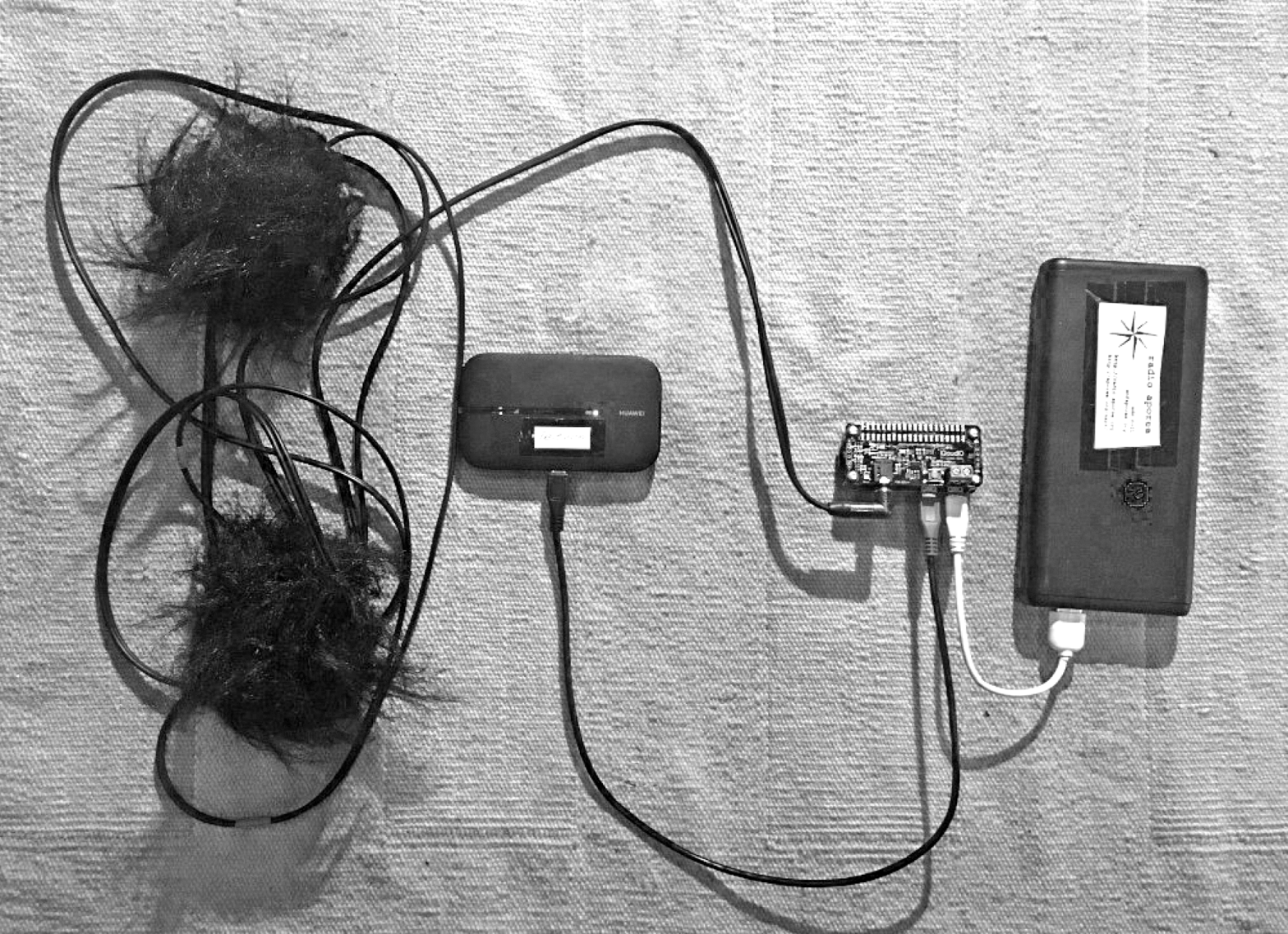“radio.earth is a participatory art radio project concerning the ecological crisis. Among other practices, it encourages critical listening to live soundscapes from 1st to 3rd natures.
mobilemics are tools for establishing listening situations from selected locations, in which ecological and environmental aspects may unfold as immediate acoustic atmospheres.
In this context, 1st to 3rd natures refer to sites of various degrees of land usage and devastation, from wild nature to urban, agricultural and industrial zones. 3rd natures are rather cultural configurations, open and speculative and interwoven with ideas, notions and problems of the Anthropocene.
Listening to a location made available by one of the mobilemics ideally invokes exchange and discussion about these topics, among the listeners.”
For the sonic islands project we took one of the Radio Earth mobilemics with us and placed it along the trajectory of our activities on the island. On this page we’ll document the locations, provide a bit of context and share some thoughts and discussions with the radio earth community.
Snapshots of each location are archived here (titled SONIC ISLANDS – …):
https://archive.org/details/@radio_aporee….
Thank you very much to Udo Noll for the support!
RE_01 sep 07 8pm – sep 09 8pm
The first location of the mobile mic was close to our base camp (Gut Glowitz) in south-east Rügen, in a little forrest on the edge of a field. Besides a species-rich acoustic environment, the most present sound was a distant, constant drone of around 150Hz[1].
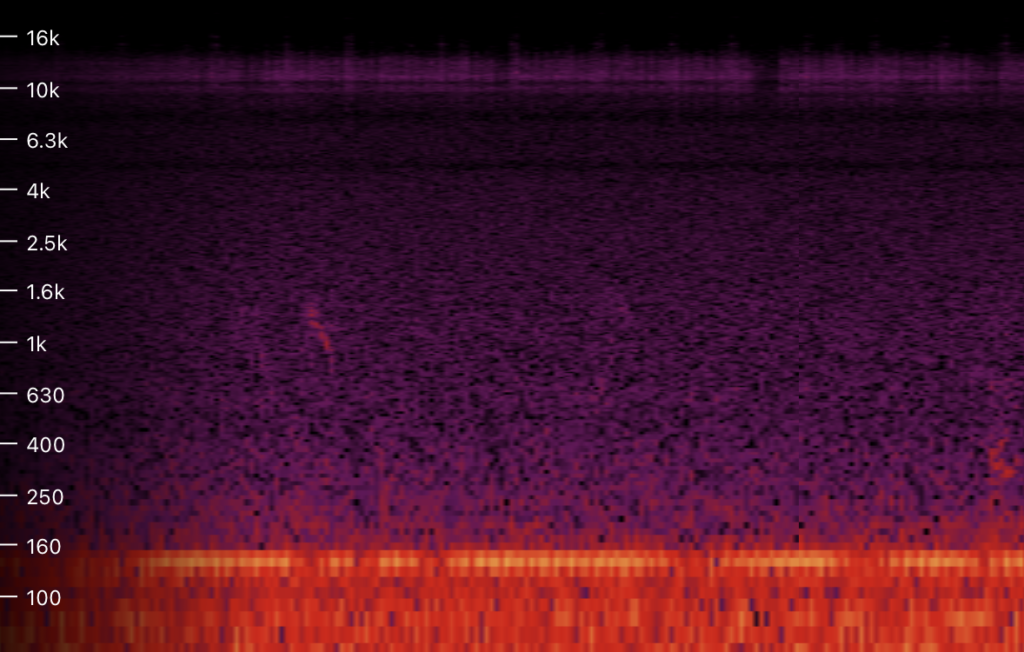
We discovered that the most probable source of this mysterious drone is located across the Greifswalder Bodden, at the industrial port of Lubmin, ca. 24km way. This industrial port is where the now former end point of the Nord Stream pipeline 1 & 2 is situated. From here the (un)natural gas is transferred to the processing plants further south as well as to the European networks.
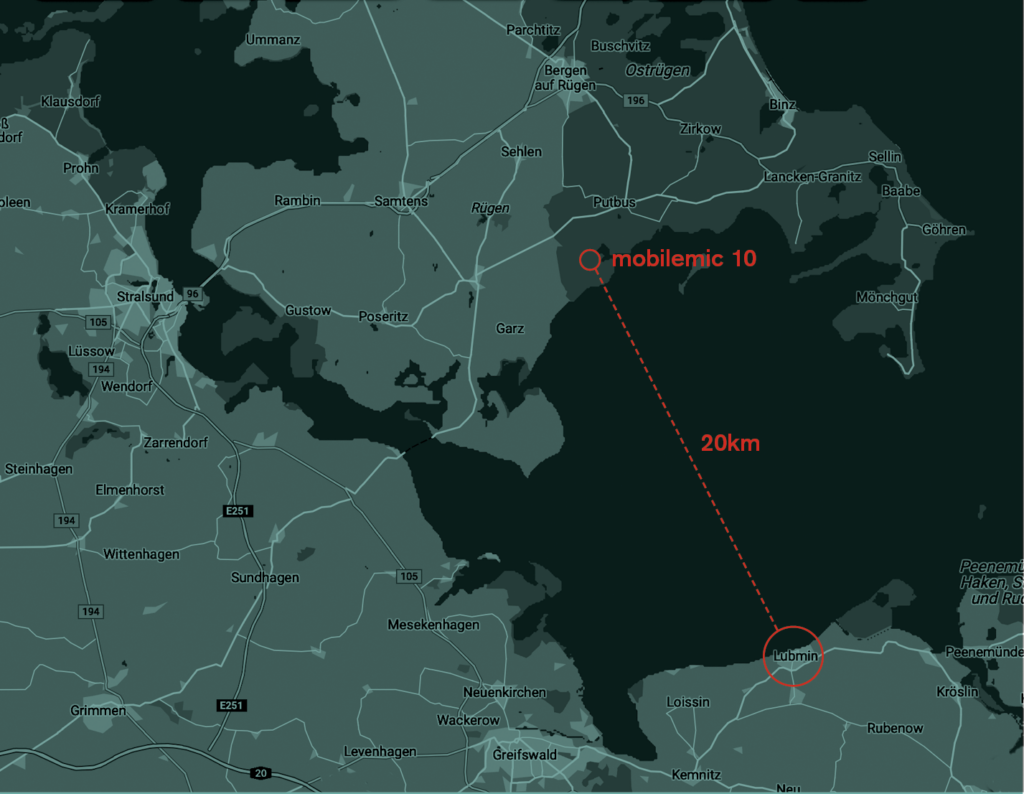
Since January 2023 the L(un)NG Terminal, “German Baltic Sea” has been in operation, re-gasifying liquid gas in the port of Lubmin. Up to 5.2 billion cubic metres of gas per year are to be fed into the German gas pipeline network via the terminal. The owner of this infrastructure is the company Deutsche ReGas, based in Lubmin. Due to the shallow Greifswald Bodden, the L(un)NG tankers cannot transport the liquefied gas to the port of Lubmin. There are therefore plans to install two floating re-gasification vessels at the port of Mukran on Rügen. Due to operate by winter 2023/2024, the gas will then be piped from Mukran to Lubmin in a ca. 50 kilometres long pipeline, yet to be laid across a very sensitive nature reserve. Currently the large L(un)NG tankers are docked in the Baltic Sea before Rügen. The depot ship Seapeak Hispania is also anchored there as a Floating Storage Unit (FSU). From the depot ship, three smaller shuttle vessels transport the L(un)NG to the port of Lubmin. In the FSRU (Floating Storage and Regasification Unit) at Lubmin the cold liquefied gas is converted into normal (un)natural gas and fed into the transmission pipeline network.
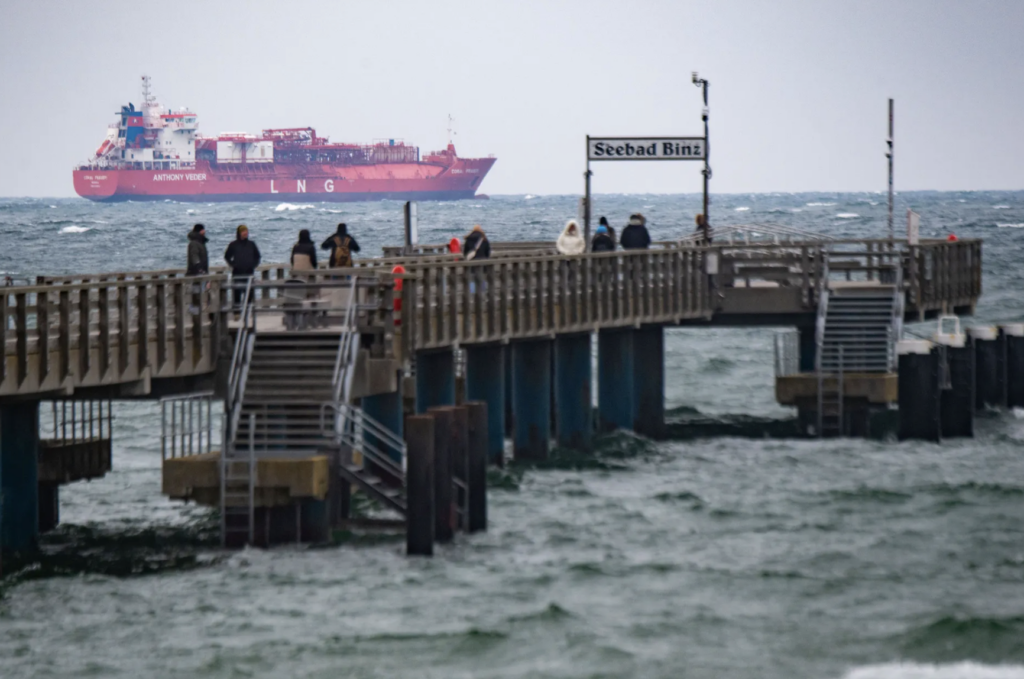
According to a couple of news reports, inhabitants of Lubmin have been complaining since January 2023, when the re-gasification vessel started operating, about extreme noise pollution especially in the low frequency bandwidth. More recently an article connected an additional disturbing noise to the pipeline laying vessel “Castoro 10“, that is currenlty working around the clock.
RE_02 sep 09 8pm – sep 10 12:30pm
The second location was approximately 1km further north from base camp on the shore of Wreechener See. The constant drone was still to be heard at this location.
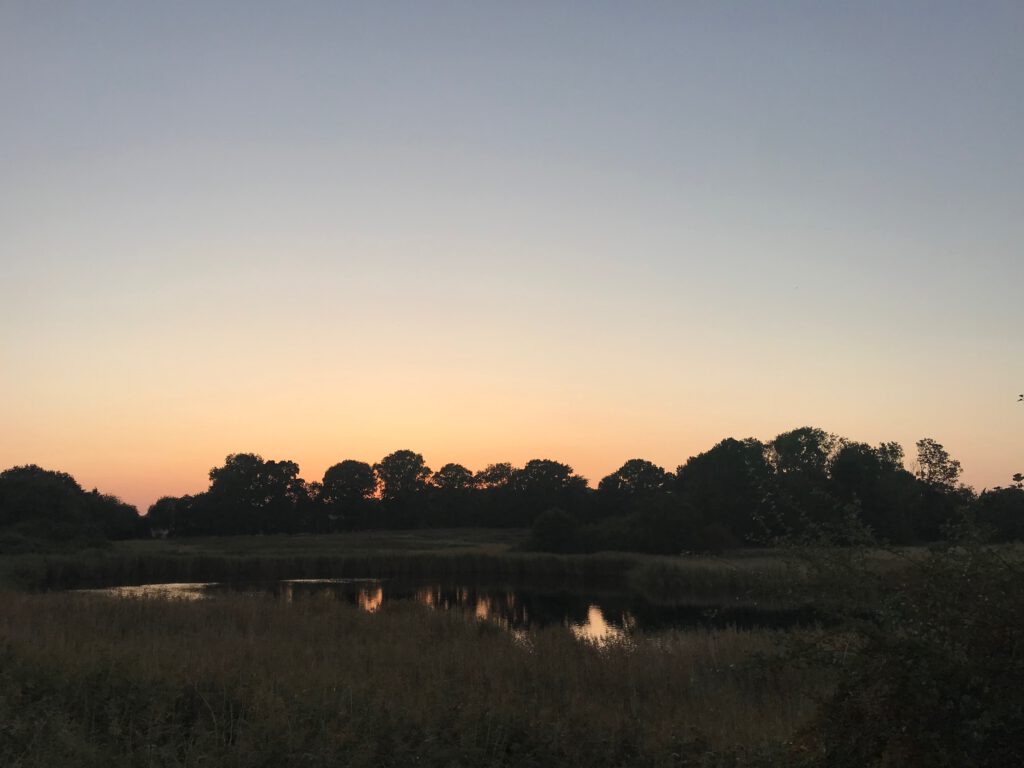
RE_03 sep 10 1pm – sep 11 sep 4pm
The location was in central Rügen, close to Ralswiek on the shore of Großer Jasmunder Bodden. The forest is called Schwarze Berge and served as a burial place for slavic settlers between the 7th and 9th centuries.
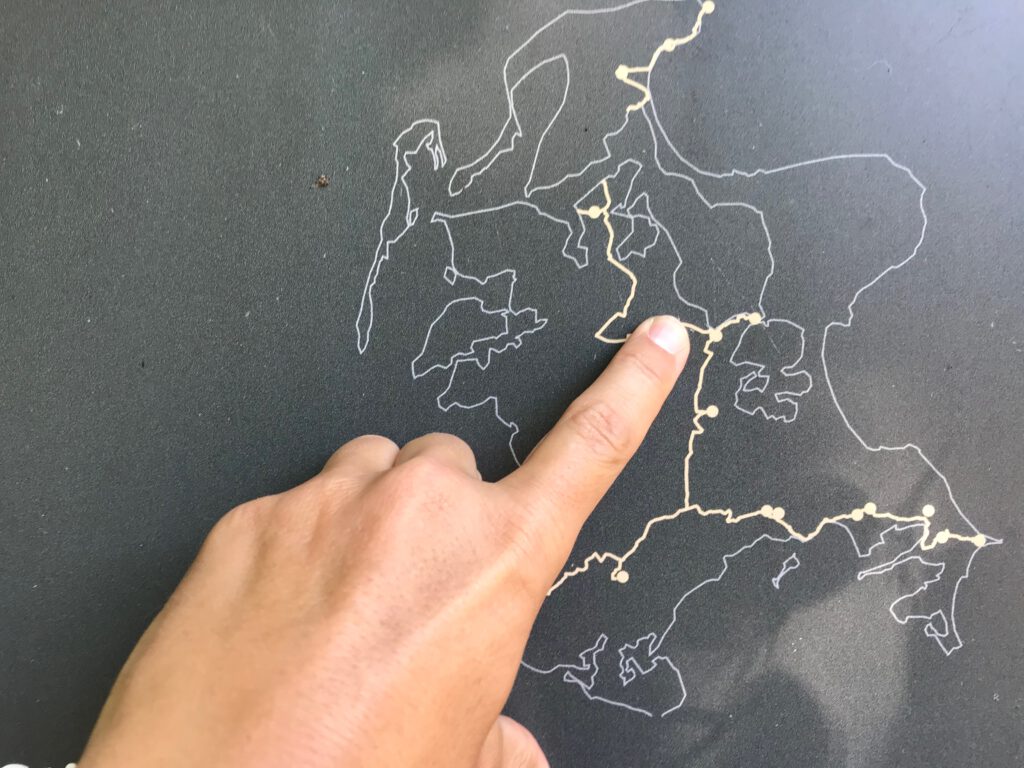
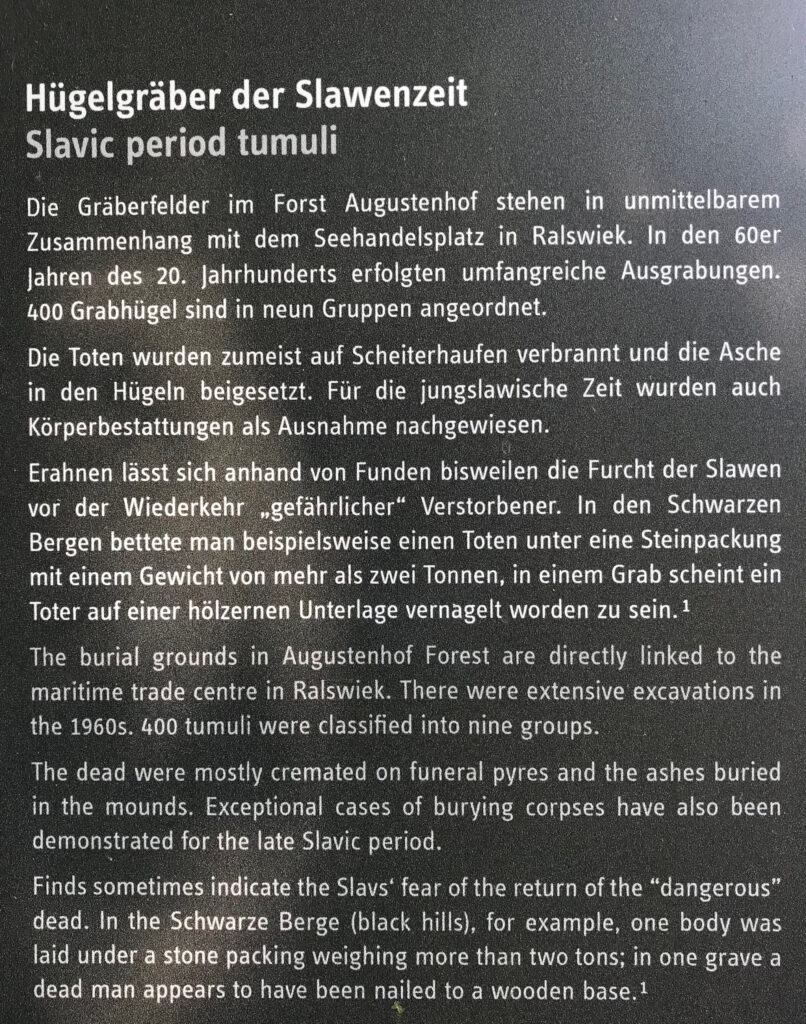
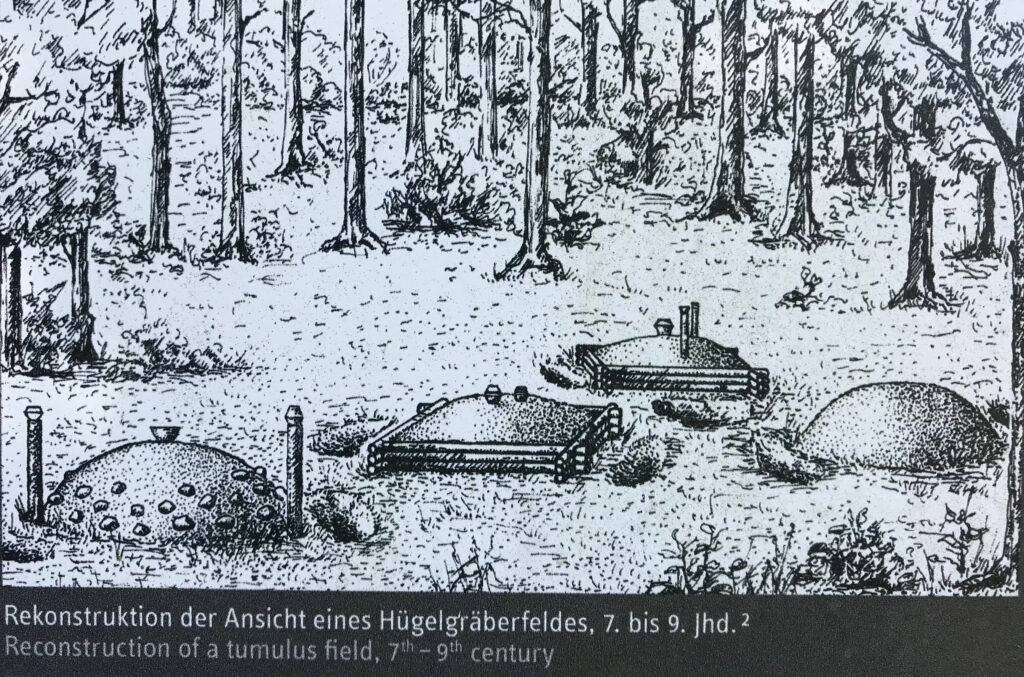
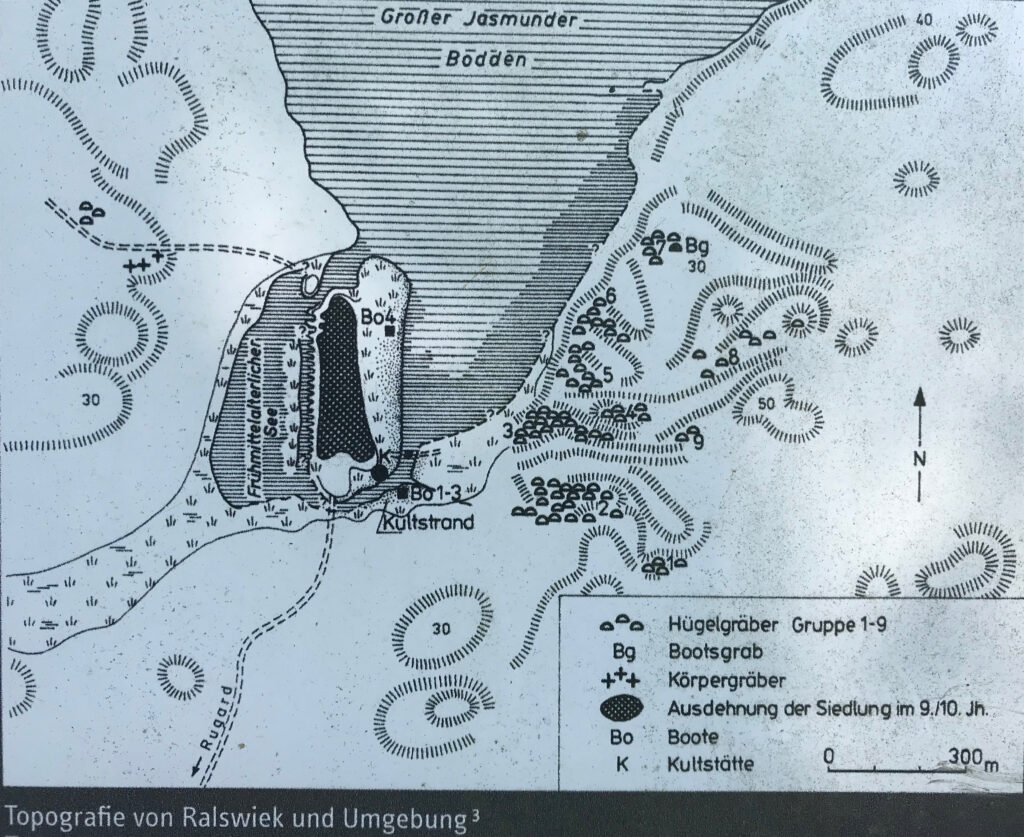
This location shows the same drone signature at ca. 40km away from Lubmin!
Deutsche Umwelthilfe (DUH) filed a lawsuit in August 2023 with the Federal Administrative Court demanding operator Deutsche ReGas revoke its terminal operation licence, saying the permit had significant shortcomings.
“Neither the shuttle traffic (used to access the Neptune), nor the resulting environmental impact on the sensitive Greifswalder Bodden have been subject to environmental permits,” DUH said in a statement, adding that the project’s noise pollution values were different than the companies’ estimates during the approval process.
RE_04 sep 11 7pm – sept 12 7:30pm
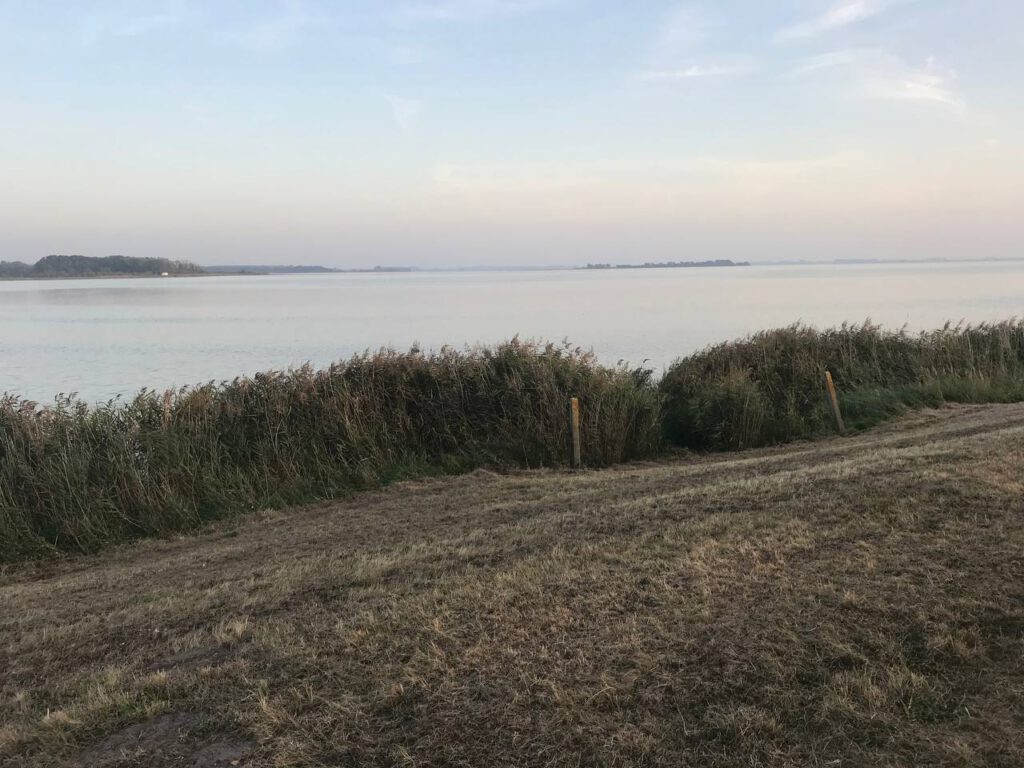
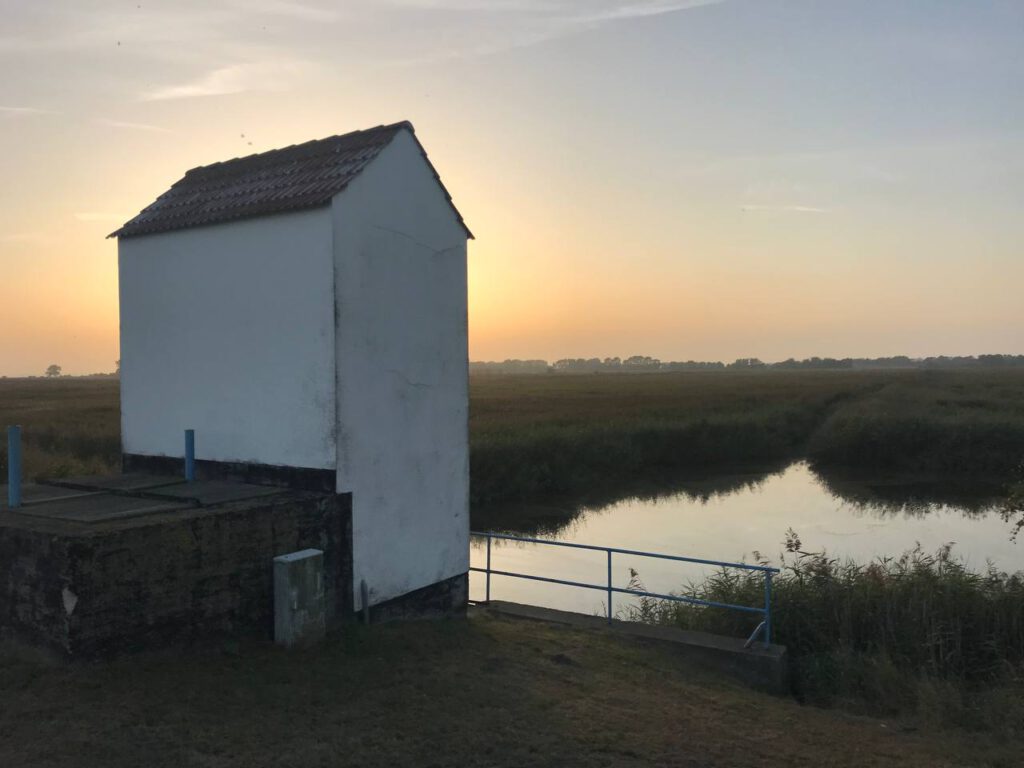
This location – called Klein Kubitz – was in the south-west of Rügen on the peninsula of Ummanz. The place links to Chile, Punta Arenas and Tierra del Fuego via Albert Pagels, who was born here in 1878.
Pagels – a highly interesting and controversial figure – ended up in Punta Arenas in 1903 after previous adventures in Europe and as a sailor around the globe. Working there as a fisherman and trapper he managed to raise money to buy a boat thereby becoming the first motor boatman in the city on the shores of the Strait of Magellan.
Known about the southern channels, he served as a guide to important explorers. Among others, he accompanied the renowned Swedish botanist Carl Skottesberg through Patagonia.
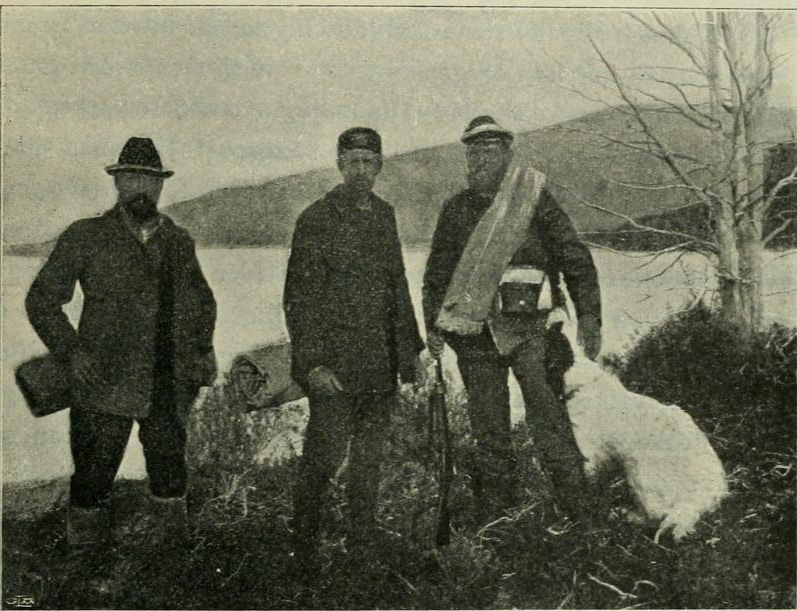
We met and interviewed his son on our trips to Tierra del Fuego in 2019 and 2021 which gave a lot of interesting insights into his father’s life and recent history for that region.
RE_05 sep 12 9pm – sep 13 6pm
This location was Prora on the east shore of the island, in a small forest between building ruins and the beach in the most northern part.
The Colossus of Prora was built by Nazi Germany between 1936 and 1939 as part of the Strength Through Joy (Kraft durch Freude or KdF) project. It consisted of eight identical buildings that ran 4.5 km in length parallel to the beach. It is still considered to be the longest building in the world.
Although the buildings were planned as a holiday resort (for 20.000 people at the same time), construction was not completed and therefore the building was not used for this purpose. Prora, as it was known, was nonetheless used largely by the Nazi Party for propaganda. The supposed strength and power displayed in the construction effort of the complex was likened by the party to themselves. After World War II, the complex found various military uses, first by the Soviet Army, then by the East German Volksarmee, and then by the German Bundeswehr (military).
Since 2004 several investors have bought parts of the complex and today most of these blocks have been renovated and marketed as holiday apartments. Interestingly, with similar slogans to ones used by the Nazis “A sea view apartment for everyone” There is almost no reminder left of it’s significant history.
More info here: https://en.m.wikipedia.org/wiki/Prora
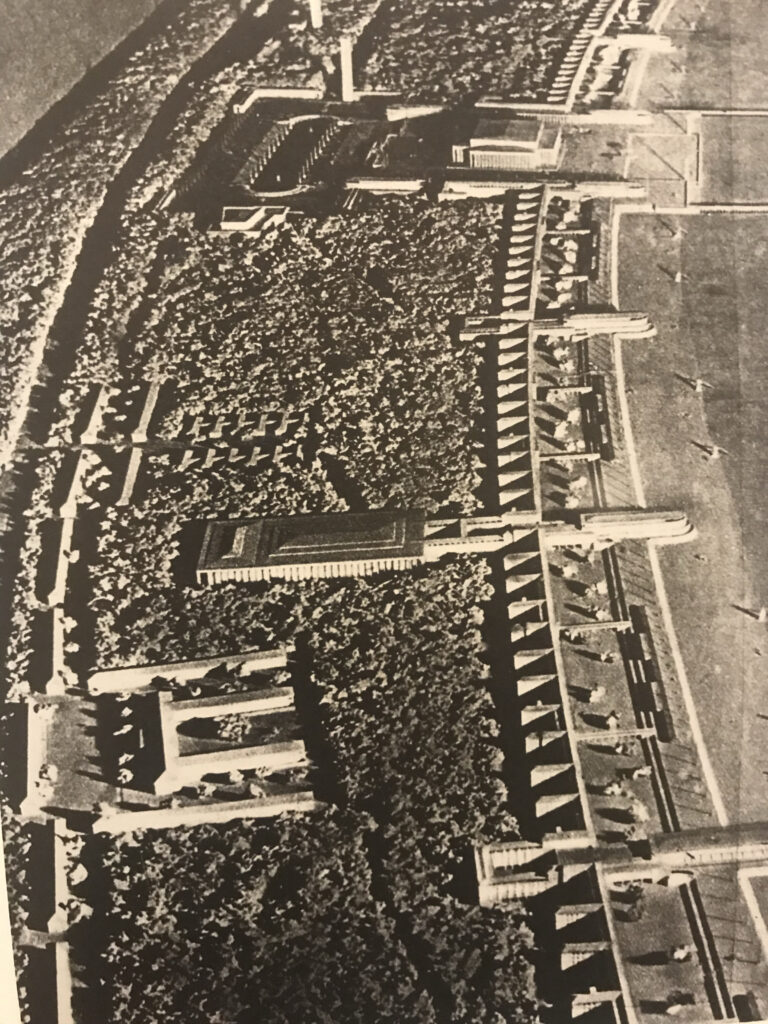
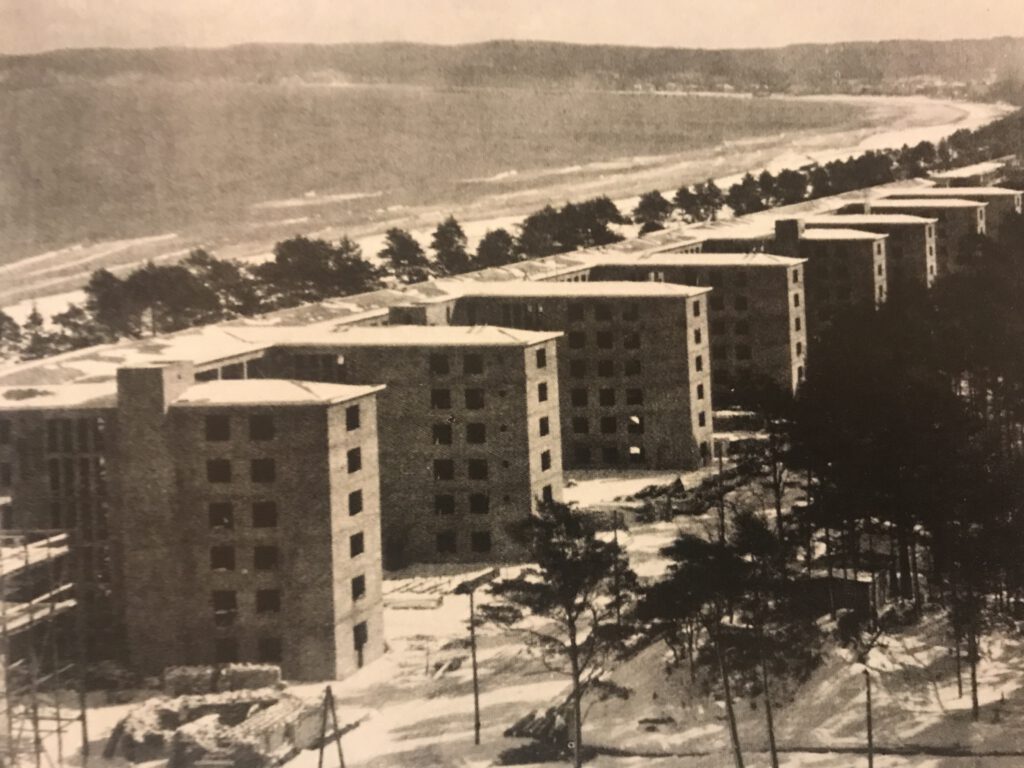
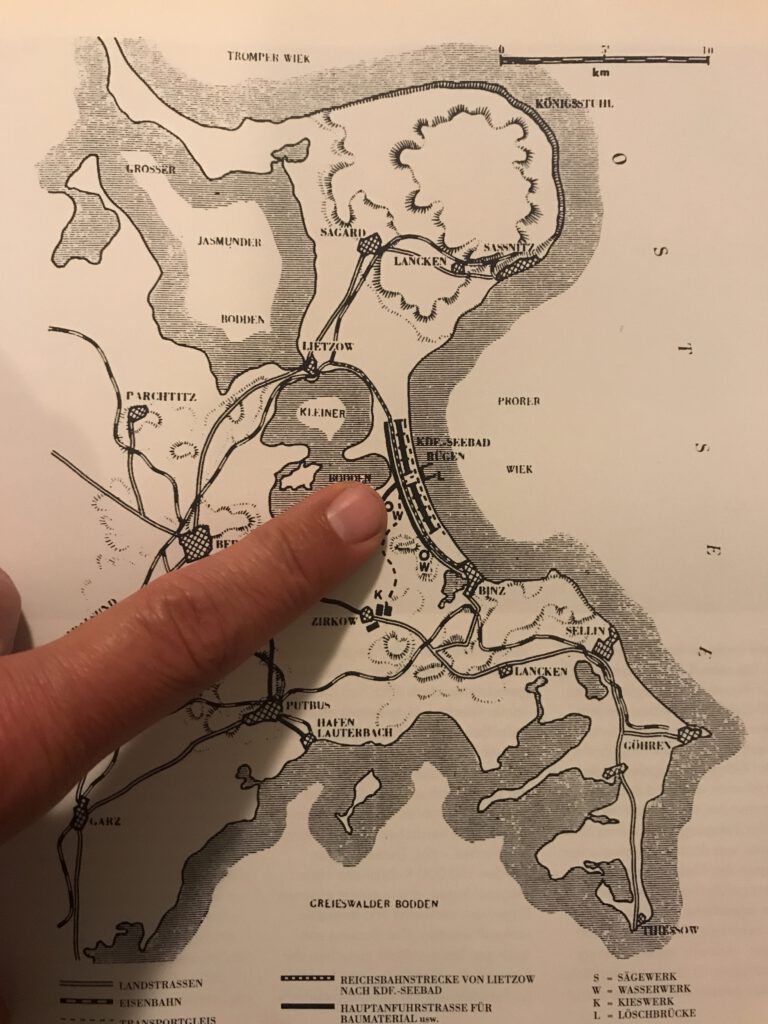
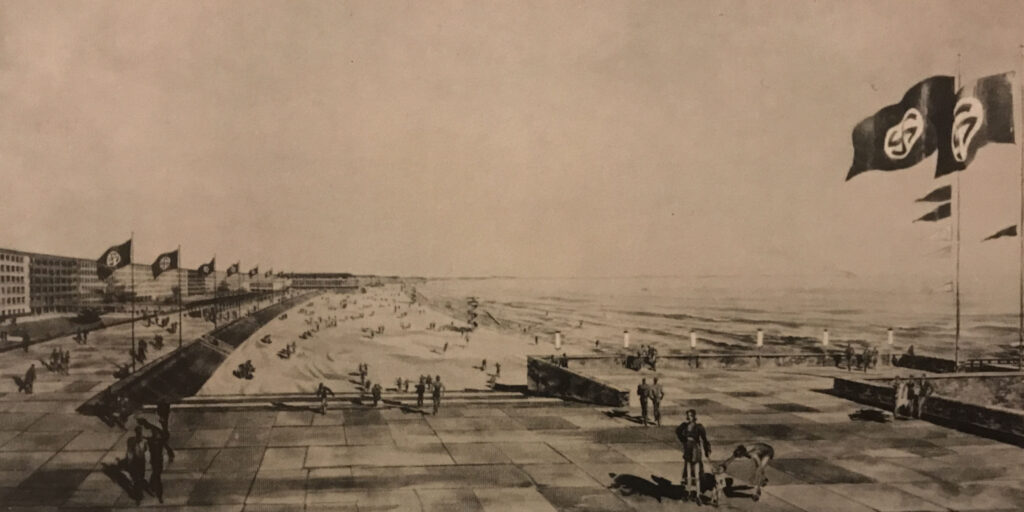
The mic was placed close to the ruin shown below in a small forrest between the building block and the beach.
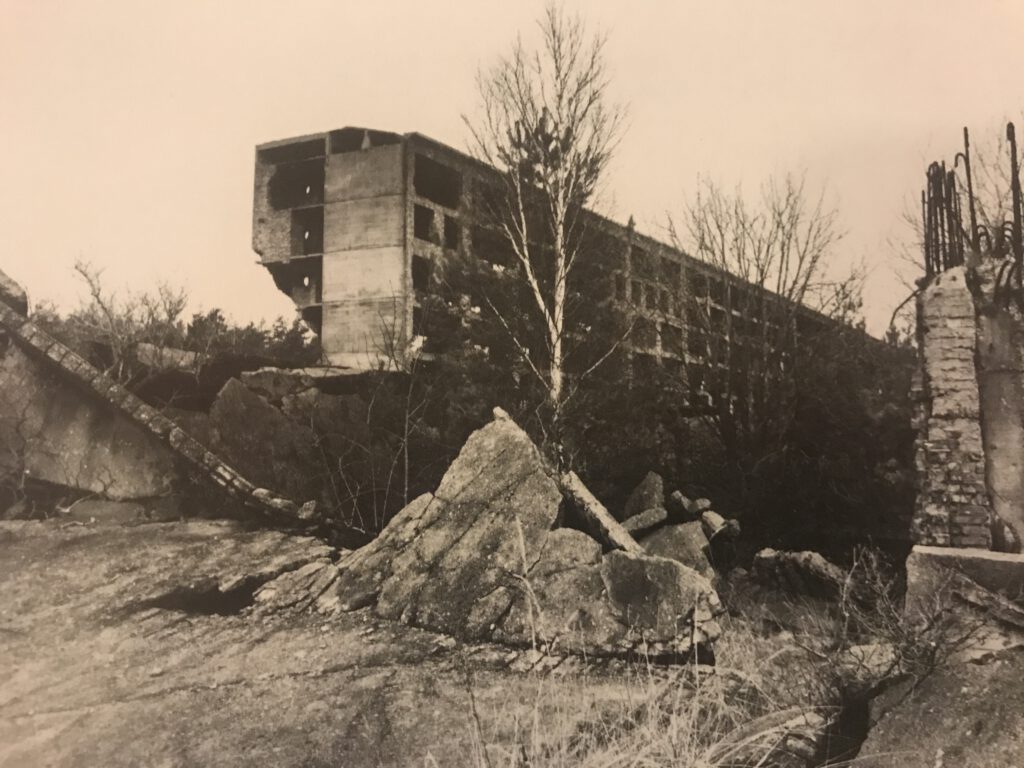
RE_06 sep 13 7:30pm –
The last location of the mobilemic was the most northern point of Rügen – Kap Arkona. From the 9th to the 12th centuries, the Jaromarsburg was located at the tip of the cape – a cult site for the Slavic tribe of the Rani. It was protected on three sides by cliffs and from the land side by a 25-metre-high burgwall. The temple located within the ramparts was an important religious centre for the Slavs of Mecklenburg. In 1168, the Danish king Valdemar I conquered and chistianized Rügen. Churches were established and the castle and its temple destroyed.
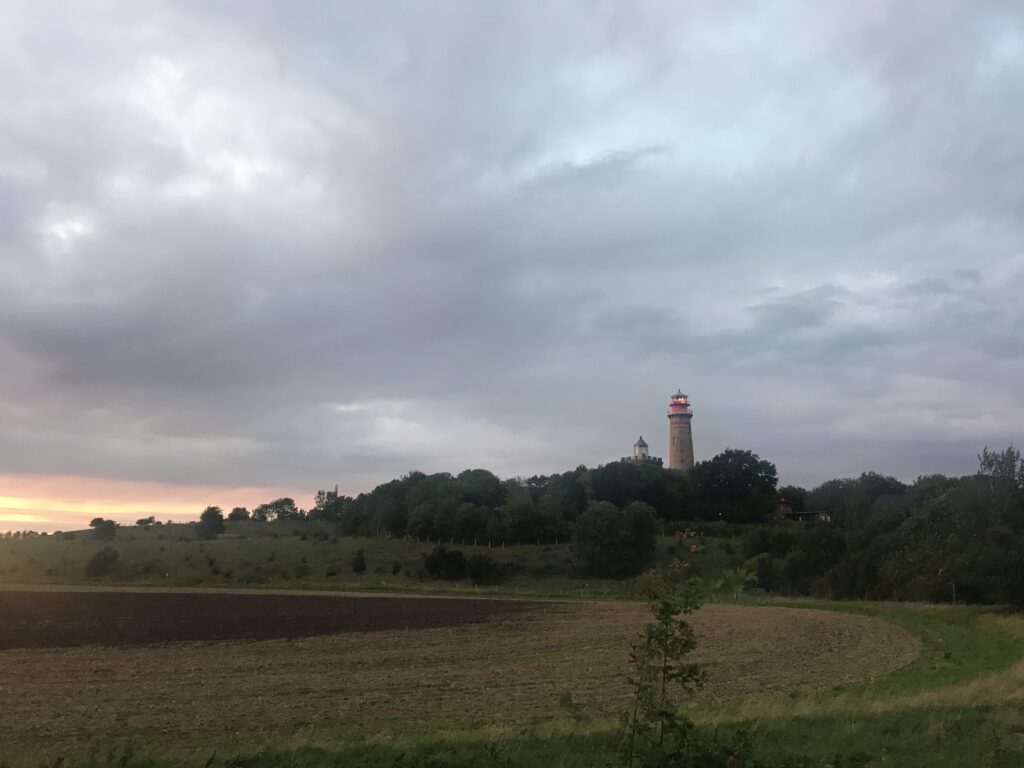
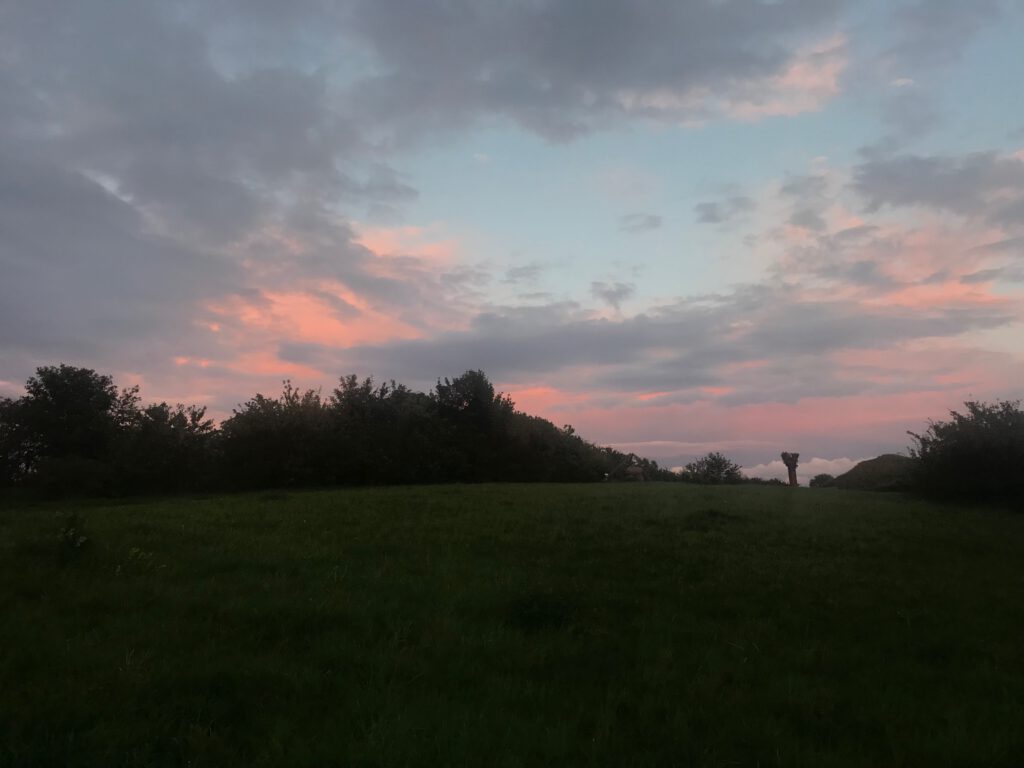
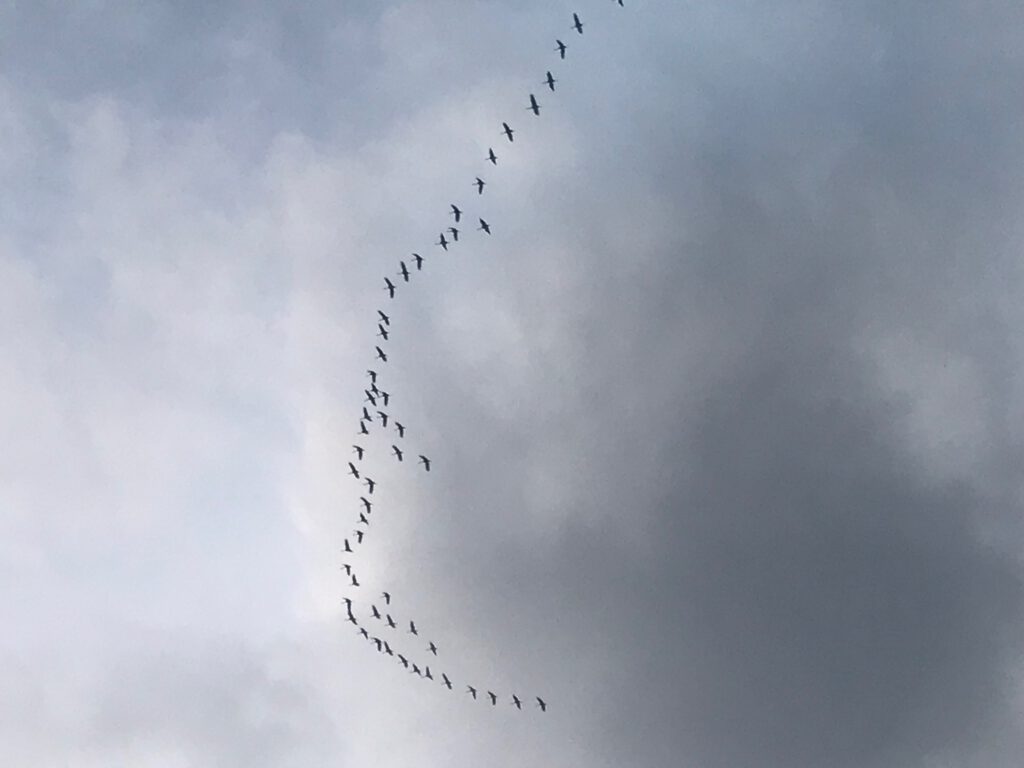
Basically we could identify the hum in all the locations we placed the mobile mic.
[1] later on we learned, that this was just an overtone of a much lower signal
